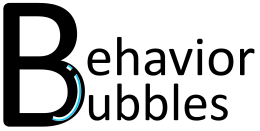Why teach mands?
A mand is the most fundamental building block of language. When babies are born, they mand by crying to express their needs (i.e. milk, sleep, comfort, etc.). Should a child continue to rely on crying to mand as they get older, parents will have to continue guessing what the child is crying for. This can cause the child to engage in more problem behaviors (i.e. screaming, grabbing, throwing, etc.) until the desired item is presented due to the lack of appropriate communication. As such, rather than allowing a child to rely on less appropriate behaviors to express themselves, it is important to teach the child to request for desired items/ activities appropriately for ease of communication. This can take the form of words, sign language, and picture exchange communication systems.
Mands teach children the importance of using language for communication. Due to the nature of a mand (i.e. which looks at the child’s motivation), the child will be able to access the item immediately in direct relation to the item desired/ manded for. This relation teaches the child how valuable using language is and helps decrease problem behavior by allowing the child to express themselves appropriately using a functional method of communication. To read more about what mands are, click here.
How do we contrive opportunities to work on mands?
For early learners who are new to manding, we can teach manding by identifying what a child wants and using their motivation. This can be the child’s preferred food, preferred items and preferred activities.
For example, should the child use gestures to lead you to cookies as they are hungry, we can take the opportunity to teach a child to mand for “cookie”. Multiple opportunities to mand can be conducted by providing a small piece of cookie each time the child mands.
With more intermediate/advanced learners, we can teach skills to mand using adjectives, adverbs, prepositions, missing items, to remove a non-preferred item/activity, and for information.
For example, looking at manding for missing items, this can be done by presenting the child with a task (e.g. painting) without providing all the materials (i.e. paint, paper – “lets paint the flower”) the child would have the opportunity to mand for the paintbrush to complete the task.
Important Points to Note:
* Make use of every opportunity for the child to request.
* Contrive motivation by alternating the item the child requests for.
* Model the way you would like the child to request appropriately.
* Ensure consistency with all caregivers.

